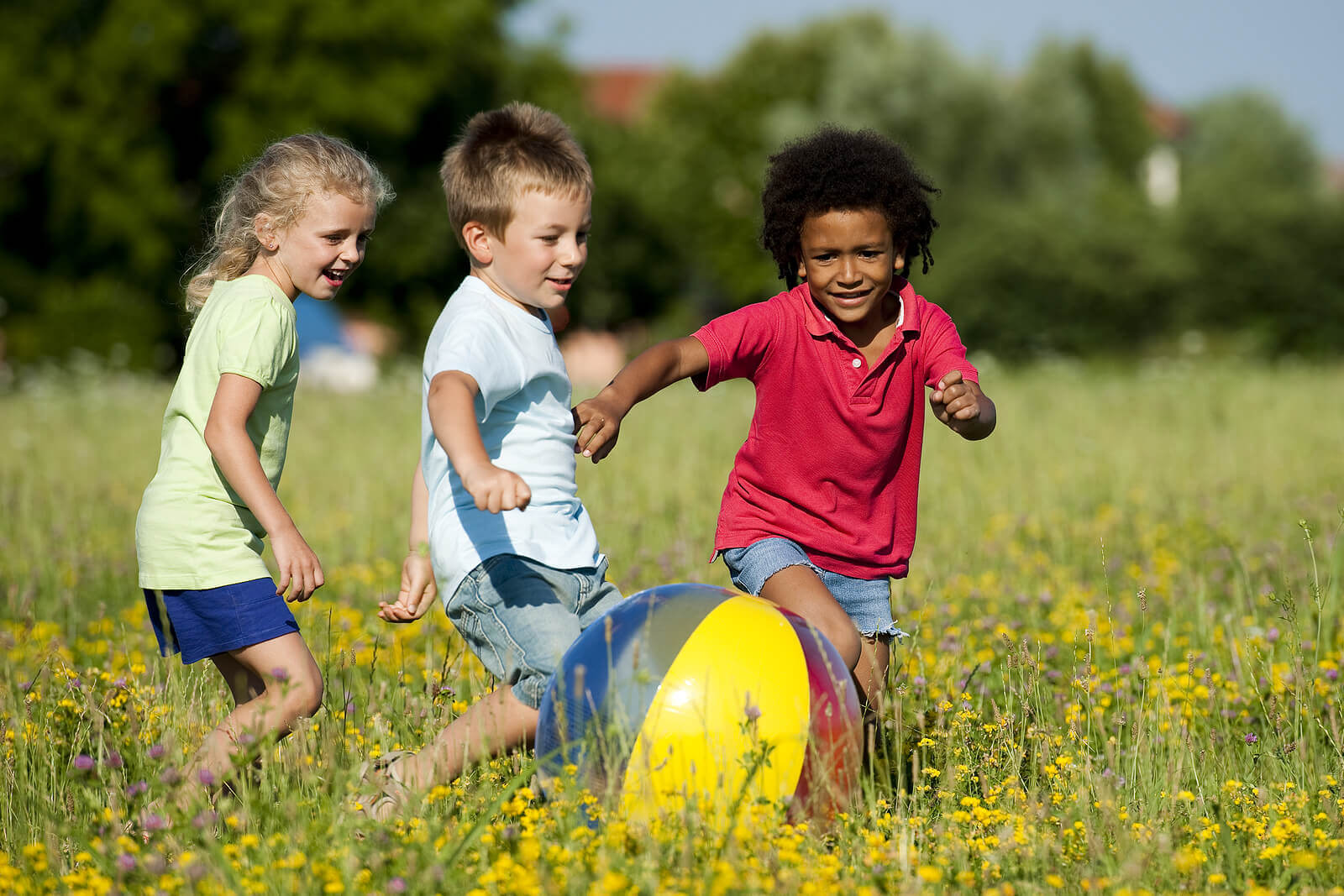Types of Infant Temperament and Their Characteristics


Written and verified by the pedagogue Marta Crespo Garcia
Infant temperament is an area that has been greatly studied by theorists in clinical and developmental psychology. Among these theorists, Thomas and Chess stand out. Through their research, this team of American psychologists managed to classify the types of infant temperament and their characteristics. Today, their research is an excellent reference point when it comes to understanding childhood behavior.
Definition of infant temperament
The term “temperament” has many different meanings. However, most scientists agree on the following definition:
“A temperamental disposition refers to distinctive patterns of feelings and behaviors that originate in the child’s biology and appear early in development.”
In reality, temperamental characteristics aren’t learned behaviors. Rather, they’re based on traits that are present from the time we’re born. Therefore, temperament has a genetic component. In this way, our personalities are the result of the interaction of our temperament with our environment.

According to these researchers, the temperamental characteristics help us understand the complex psychology of children. Therefore, if parents and educators are aware of these characteristics, we can better understand children’s reactions and help them in their education and wellbeing.
Below, we’ll look at the traits or characteristics that define infant temperament and what types of temperament exist. And we’ll do so based on the research of child psychiatrists Thomas and Chess.
The characteristics of infant temperament
Thomas and Chess conducted their research by observing the characteristics of 141 children and 85 families. Based on their observations, they identified nine traits or characteristics of childhood temperament. These characteristics are present at birth. Let’s look at each one:
- Activity level. This has to do with a child’s motor activity. In other words, how often a child moves in daily interactions with parents, while sleeping, and while awake.
- Biological rhythm. This trait indicates the regularity of biological functions. For example, it refers to eating, sleeping, going to the bathroom, etc.
- Approach and withdrawal. This determines a child’s willingness regarding different situations, places, people, and new things. In other words, this trait evaluates the initial response a child shows toward new stimuli or new people.
- Adaptability. Here, we’re talking about the ability to adapt to the stimuli mentioned in the previous point. In other words, it describes how children handle changes and transitions.
- Intensity. This trait refers to how expressive children are, observing the intensity of their responses to emotions like happiness, sadness, anger, etc.
More characteristics of infant temperament
- Sensory threshold. This defines the sensitivity that children display towards physical stimuli like noise, temperature, light, etc. Determining a child’s sensory threshold involves observing the level of stimulation necessary in order to produce a response in the child.
- Mood. This determines the amount of positive or negative responses that children show. A positive disposition reflects happy and expansive children. On the other hand, a negative disposition reflects children that are serious and irritable.
- Distractibility. This indicates the level of concentration children have in the face of external stimuli while trying to perform a task. In the same way, distractibility has to do with how these external stimuli interfere with children’s behavior.
- Persistence/attention. This determines children’s ability to carry on with an activity when it’s difficult or obstacles appear.
Types of infant temperament
According to Thomas and Chess, the combination of these nine behavior patterns come together to make up three types of temperaments:
- Easy children
- Slow-to-warm-up children
- Difficult children
It’s easy for parents to recognize these types of temperaments in their children, but let’s take a closer look.

Difficult children (10%)
Children that fall into this type of temperament are irregular when it comes to feeding and sleeping. At the same time, they’re extremely active and have a hard time adapting. Therefore, they tend to reject and shy away from new or strange situations.
As for their mood, they’re irritable and aggressive, have little emotional self-regulation, and have a negative disposition. When it comes to external stimuli, they respond intensely.
Easy children (40%)
Children that fall into this category have a high biological rhythm. Furthermore, they display interest in new experiences and situations and have the ability to adapt well to change. Their responses to emotions are of low to moderate intensity. They have a positive disposition and are happy and affectionate.
Slow-to-warm-up (10%)
These children aren’t very active nor are they very accessible. In other words, they’re shy and fearful and their first reaction to the unknown is to pull away. However, over time, they’re able to adapt to change. Just like difficult children, they have negative humor and react with low to moderate intensity to external stimuli.
This type of temperament causes these little ones to have a hard time engaging in social relationships. This is due to their hesitation, shyness, and inaccessibility.
What to keep in mind regarding the types and characteristics of infant temperament
Thomas and Chess suggest different parenting strategies according to each child’s temperament. In that sense, children with a difficult temperament require more restrictive control and a lower level of parental negativity. At the same time, children that are slow to react need encouragement to explore new situations, and fearful children benefit from gentle and moderate parental discipline.
Therefore, as parents and educators, we need to understand the types and characteristics of the temperaments of our children. This helps us better understand and comprehend our little ones and their reactions.
Infant temperament is an area that has been greatly studied by theorists in clinical and developmental psychology. Among these theorists, Thomas and Chess stand out. Through their research, this team of American psychologists managed to classify the types of infant temperament and their characteristics. Today, their research is an excellent reference point when it comes to understanding childhood behavior.
Definition of infant temperament
The term “temperament” has many different meanings. However, most scientists agree on the following definition:
“A temperamental disposition refers to distinctive patterns of feelings and behaviors that originate in the child’s biology and appear early in development.”
In reality, temperamental characteristics aren’t learned behaviors. Rather, they’re based on traits that are present from the time we’re born. Therefore, temperament has a genetic component. In this way, our personalities are the result of the interaction of our temperament with our environment.

According to these researchers, the temperamental characteristics help us understand the complex psychology of children. Therefore, if parents and educators are aware of these characteristics, we can better understand children’s reactions and help them in their education and wellbeing.
Below, we’ll look at the traits or characteristics that define infant temperament and what types of temperament exist. And we’ll do so based on the research of child psychiatrists Thomas and Chess.
The characteristics of infant temperament
Thomas and Chess conducted their research by observing the characteristics of 141 children and 85 families. Based on their observations, they identified nine traits or characteristics of childhood temperament. These characteristics are present at birth. Let’s look at each one:
- Activity level. This has to do with a child’s motor activity. In other words, how often a child moves in daily interactions with parents, while sleeping, and while awake.
- Biological rhythm. This trait indicates the regularity of biological functions. For example, it refers to eating, sleeping, going to the bathroom, etc.
- Approach and withdrawal. This determines a child’s willingness regarding different situations, places, people, and new things. In other words, this trait evaluates the initial response a child shows toward new stimuli or new people.
- Adaptability. Here, we’re talking about the ability to adapt to the stimuli mentioned in the previous point. In other words, it describes how children handle changes and transitions.
- Intensity. This trait refers to how expressive children are, observing the intensity of their responses to emotions like happiness, sadness, anger, etc.
More characteristics of infant temperament
- Sensory threshold. This defines the sensitivity that children display towards physical stimuli like noise, temperature, light, etc. Determining a child’s sensory threshold involves observing the level of stimulation necessary in order to produce a response in the child.
- Mood. This determines the amount of positive or negative responses that children show. A positive disposition reflects happy and expansive children. On the other hand, a negative disposition reflects children that are serious and irritable.
- Distractibility. This indicates the level of concentration children have in the face of external stimuli while trying to perform a task. In the same way, distractibility has to do with how these external stimuli interfere with children’s behavior.
- Persistence/attention. This determines children’s ability to carry on with an activity when it’s difficult or obstacles appear.
Types of infant temperament
According to Thomas and Chess, the combination of these nine behavior patterns come together to make up three types of temperaments:
- Easy children
- Slow-to-warm-up children
- Difficult children
It’s easy for parents to recognize these types of temperaments in their children, but let’s take a closer look.

Difficult children (10%)
Children that fall into this type of temperament are irregular when it comes to feeding and sleeping. At the same time, they’re extremely active and have a hard time adapting. Therefore, they tend to reject and shy away from new or strange situations.
As for their mood, they’re irritable and aggressive, have little emotional self-regulation, and have a negative disposition. When it comes to external stimuli, they respond intensely.
Easy children (40%)
Children that fall into this category have a high biological rhythm. Furthermore, they display interest in new experiences and situations and have the ability to adapt well to change. Their responses to emotions are of low to moderate intensity. They have a positive disposition and are happy and affectionate.
Slow-to-warm-up (10%)
These children aren’t very active nor are they very accessible. In other words, they’re shy and fearful and their first reaction to the unknown is to pull away. However, over time, they’re able to adapt to change. Just like difficult children, they have negative humor and react with low to moderate intensity to external stimuli.
This type of temperament causes these little ones to have a hard time engaging in social relationships. This is due to their hesitation, shyness, and inaccessibility.
What to keep in mind regarding the types and characteristics of infant temperament
Thomas and Chess suggest different parenting strategies according to each child’s temperament. In that sense, children with a difficult temperament require more restrictive control and a lower level of parental negativity. At the same time, children that are slow to react need encouragement to explore new situations, and fearful children benefit from gentle and moderate parental discipline.
Therefore, as parents and educators, we need to understand the types and characteristics of the temperaments of our children. This helps us better understand and comprehend our little ones and their reactions.
All cited sources were thoroughly reviewed by our team to ensure their quality, reliability, currency, and validity. The bibliography of this article was considered reliable and of academic or scientific accuracy.
- Chess, S., & Thomas, A. (2013). Temperament: Theory and practice. Routledge.
- Chess, S., & Thomas, A. (1987). Origins and evolution of behavior disorders: From infancy to early adult life. Harvard University Press.
- Temperamento: Síntesis. En: Tremblay RE, Boivin M, Peters RDeV, eds. Rothbart MK, ed. tema. Enciclopedia sobre el Desarrollo de la Primera Infancia. http://www.enciclopedia-infantes.com/sites/default/files/dossiers-complets/es/temperamento.pdf
This text is provided for informational purposes only and does not replace consultation with a professional. If in doubt, consult your specialist.








